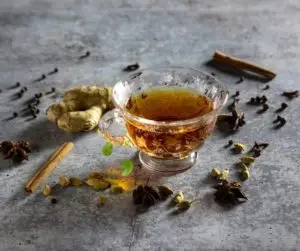We use the French term terroir (from the Latin terra means land, soil) to describe the specific characteristics of a particular land, namely location, temperature, soil, sunshine, mist, humidity, topography. It’s this combination of factors that gives a tea its unique aroma and flavour. It also influences the health compounds contained within the tea leaves.
When two teas of the same type (let’s say Silver Needle teas) are grown in different places, that difference in terroir will make them taste differently. Even more, the same tea from two different batches (let’s say 2020 and 2021) can also taste differently since, for instance, the weather hasn’t been the same in those two years. That means that we shouldn’t expect our teas to taste the same year on year, even though they come from the same farmer.
The terroir of a tea is particularly important for pure, unblended teas.
Now let’s find out what kind of terroir tea likes the most. The optimal conditions for tea growing consist in:
- Acidic soil (pH of 4.5-5.5) because it helps absorb the nutrients, is rich in minerals and allows the water to drain while at the same time can retain moisture. The right soil should enable the tea plant to extend its roots where it can find water and nutrients.
- A tropical or subtropical climate
- Plenty of rainfall during the year
- Temperatures between 15 and 25°C (60-77°F)
- 2-3 hours of sunshine every day
- High humidity
- High elevation (around 2,000 m or 6,500 ft)
- The tea plant is allowed to recover during a dormancy period in winter.
Considering all these factors, the mountainous terrain is often the best for tea growing. Plus, at high altitudes, there are fewer or no insects attacking the plants.
The combination of warm days, cool nights and limited sunshine makes the tea plants grow slowly. In turn, slower growth contributes to a higher concentration of aromas.
The trees or flowers growing in the proximity of the tea plants can also influence the character of the tea.
Having said all that, I don’t want to undermine the quality of teas grown in a terroir that doesn’t exhibit all the ‘ideal’ characteristics listed above. Tea masters have been great at crafting exquisite teas, despite not benefitting from the ideal terroir. They have learnt how to work in harmony with nature. Cheers to them!


